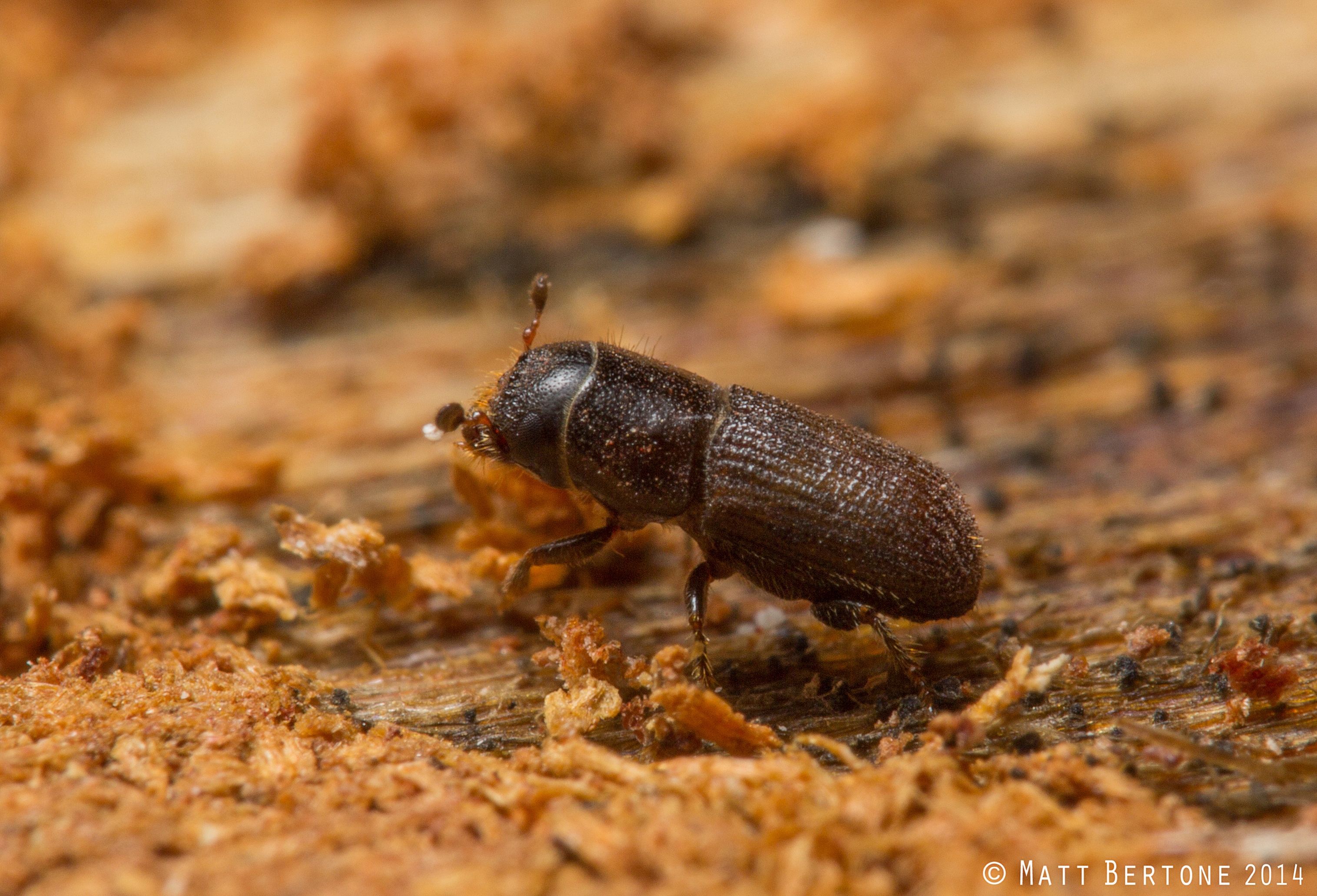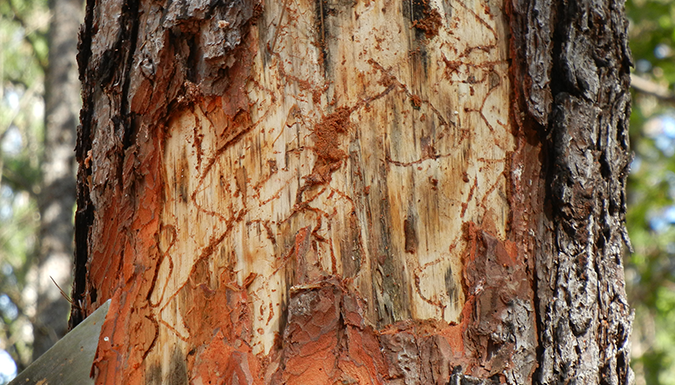Southern Pine Beetle
The Southern Pine Beetle (SPB) (Dendroctonus frontalis) is one of the most destructive pests in pine forests across the Southeast, including the Clemson University Forest.
These small bark beetles attack and kill pine trees, causing widespread damage and economic loss. When pine stands become stressed, they are particularly susceptible to attack so proper management techniques which create a healthy forest are key to prevention.

How Southern Pine Beetles Affect Forests
-
Tree Infestation – Beetles burrow under the bark, disrupting nutrient flow and eventually killing the tree.
-
Rapid Spread – SPB outbreaks can move quickly, devastating large areas of pine forests.
-
Ecological Impact – Loss of pine trees alters forest ecosystems, affecting wildlife and plant diversity.
-
Increased Fire Risk – Dead and dying trees contribute to wildfire hazards.
Signs of Infestation
-
Yellowing or reddish-brown needles
-
Pitch tubes (small resin blobs) on the bark
-
S-shaped tunnels under the bark
-
Clusters of dead or dying pines
Management & Prevention
-
Early Detection – Regular forest monitoring helps identify outbreaks before they spread.
-
Thinning Pine Stands – Reduces competition and stress making trees more resilient.
-
Prescribed Fire – Helps control competing vegetation indirectly reducing SPB risks.
-
Tree Removal – Infested trees should be removed promptly to prevent further spread.
Southern Pine Beetle Information Center
The Southern Pine Beetle Information Center provides research-based insights on SPB outbreaks, forest management strategies and prevention methods. This resource helps landowners, foresters and researchers understand the impact of one of the most destructive pests in Southern pine forests. Stay informed with the latest data, outbreak predictions and management recommendations.
Learn More

